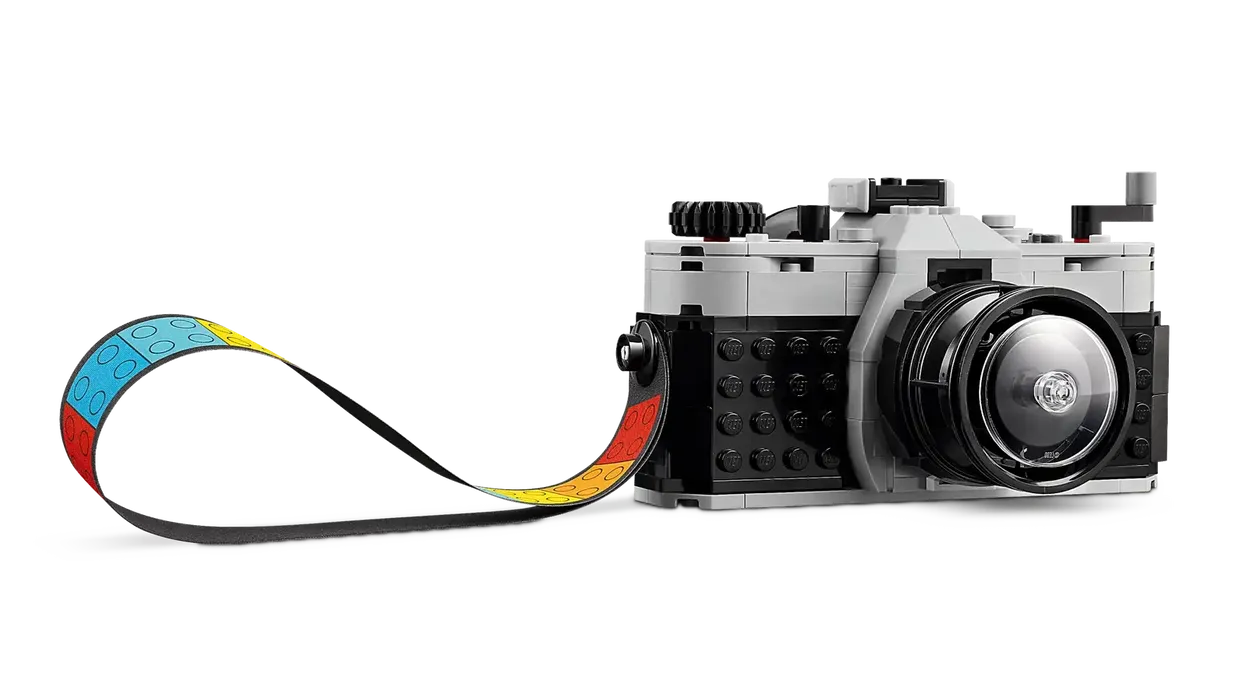Build Your Own Vintage Camera with LEGO’s Retro Camera Creator Set
A perfect gift to kickstart a kid’s love for retro film and vintage video.

LEGO Retro Camera Set
Have you ever wanted to build your own 35mm film SLR camera from scratch? But, you know, not with real parts, but with LEGOs? Well, now is your (or one of your younger loved ones) chance. LEGO has announced that they’re releasing a new Retro Camera Creator Set that features a craftable 35mm film camera.
This Retro Camera Creator Set is set to include everything from a moving lens to a full film loading and unloading setup, plus feature a film-inspired strap for about as close to a real world experience as possible. (You know, without actually being able to take real pictures or anything.)
What’s more, LEGO fans will also be able to create a retro video camera as well complete with an opening flap and a retro TV with antenna to “broadcast” their content directly to the masses. While you obviously won’t be able to use either of these cameras for any real world photo or video (just yet), let’s take a look at these cool toys to see if they might be a good gift for you or your loved ones.
The LEGO Retro Camera Creator Set

The full Retro Camera set from Lego
Not to bury the lede here, but sadly — while this LEGO Retro Camera Creator Set does look very fun — it’s not currently set to hit stores before the holiday season. However, even if that doesn’t change, it could still be a cool gift for next year as it’s only set to cost $20.
This LEGO Retro Camera set will include all of the necessary parts to build an SLR-inspired camera, plus even include two film rolls, film canisters, a hot-shoe mount, and—of course—a workable rewind handle to crank through your film once you're done with your shoot.
It looks to be as close to a fully functional device as possible as you’ll be able to perform pretty much every element of analog photography, plus, you know, be a fun journey to put the camera together in the first place.
A LEGO Video Camera

LEGO video camera
As part of this 3-in-1 set, you’ll also be able to create the aforementioned vintage video camera which can be used for video or broadcast needs. A fun way to encourage a future generation of content creators to not only focus on photography, but to be prepared for film and video as well.
There are also obvious ways for creators to tinker with these designs and make their own versions of each camera type, as the set also includes other blocks that represent transparencies of photos (like wildlife photos including giraffes and butterflies) which could double for video too perhaps.
In total, the entire Retro Camera set should include 261 pieces and will be recommended for builders aged 8 and up. The LEGO Retro Camera set will be available for $20 and is set to be available starting on Jan. 1, 2024.- Want to Build a Camera Stabilizer out of LEGOs? Of Course You Do ›
- Previz with Fusion and Legos: Doing A New Kind of Shot ›
- How to Build a DIY Wireless Follow Focus Out of LEGOs ›











